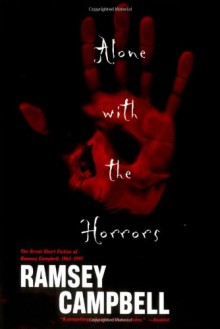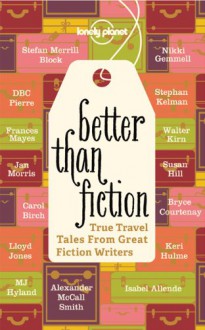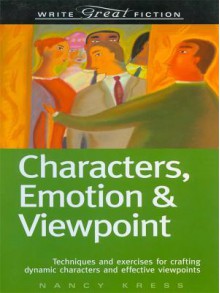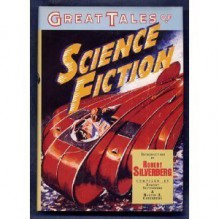
Style is a curious thing in writing: the words we use, the tone of our voice, the images we create, the themes we love to explore. Every author has their own style, even though some don't realize it--indeed, it is those writers who are least aware of their style who will be dominated by its little vicissitudes.
We spend our whole careers cultivating our style, improving it--and yet, style is also a crutch, a limitation. As Bruce Lee observed: the best style is no style at all--to be able to move fluidly, unpredictably from one moment to the next, doing precisely what is required when it is required instead of falling back on tired old habits.
It is what we all would be, if we could: equal to any genre, any mood, any audience--but alas, far-flung ideals are not to be held in our meager grasp. Style develops not only through our strengths, but our weaknesses: through practice, we become increasingly aware of what we do well, and what trips us up, and we modify our style to take advantage of that.
Of course, it tends to become self-fulfilling, since the more you work within your area of comfort, the more skilled and specialized you become. Many authors who distinguished themselves by turning their years of knowledge and experience onto their preferred type of story end up stumbling awkwardly when they step outside of that, and discover that their chosen voice is not universally applicable. Style is always a trap--but it's also a necessity.
Campbell has the enviable reputation of being the 'greatest living horror writer', named a worthy successor to the likes of Lovecraft, Blackwood, Chambers, Bierce, Poe, and M.R. James. Certainly, he demonstrates an able pen here, but this collection is not the one to convince me that he belongs in the Pantheon of Terrors.
The lead story gets a pass, since it's the first one he ever submitted for publication--a plot-free mass of explanations and worldbuilding that apes the worst of Lovecraft's style. It inspiring for any writer to see just how far Campbell has come from these early roots, that he does eventually develop the ability to tell a story, and not a bad one.
However, unfortunately the key term in that compliment is 'a story'--almost all the tales in this collection could have been created by my patented Ramsey Campbell Story Generator:
John is a (Writer/Literary Agent/Publisher/Editor) and he likes (Jigsaw Puzzles/Hiking). His favorite music is (Bach/Mozart/Schubert). He has no children, no wife, no girlfriend--not really any family to speak of. He just doesn't really connect with people, he prefers to be alone. His few 'friends' are jerks who he avoids, when he can. He finds people on the street threatening--especially youths--though he always watches them from his window.
On the way home from work, he always has to walk by a dark and dingy (Underpass/Bus Shelter/Abandoned Building/Alleyway), lit only by the (Sodium/Mercury) light of the streetlamps. He heard that someone died there, once. He finds part of a dead (Cat/Pigeon), but the next day, it isn't there. In the shadows, he hears sounds like (Armor Clinking/Rustling/Scratching).
He tells himself it's 'probably (Old Papers/Bags/Rats/Birds)' making the sounds. He sees something in the shadows: a (Plastic Bag/Heap of Clothes/Pile of Trash)--at least it 'must be a (Bag/Heap/Pile)'. A little later, he realizes something is following him--probably the teens, he thinks, but no, it's something else. He tries to stay calm, but panics and runs, then slips and falls, hurting himself. He has a sudden, inexplicable revelation of just what this thing is, what's happening to him, and why.
He thinks for a moment he's gotten away--but no, it's right next to him. It's a lumpy hobo shape, its body the wrong shape for a person. It's reaching for him, making moist noises. As it closes in, he's thankful he can't see its face.
Now, this isn't a bad story--indeed, taken on its own, each story is perfectly good: well-written, well-structured--but that doesn't make it any more interesting to read it over a dozen times in a row with slight variations. It's almost as if Campbell is trying to refine a very specific, focused style--a one-story style, as we develop in the process of drafting and editing: ever focusing, tightening, improving--this collection provides an apt example for why we don't include all our early drafts alongside the final copy.
Now, there are a few stories that stand out, but not always in good ways. There is precisely one female narrator in the collection, but it's still the same story, just with a perspective shift: we still have our standard Campbell Protagonist, while the woman narrator seems to be one of his various jerk friends.
Tellingly, the woman is alone, like all of Campbell's narrators, but unlike the men, she doesn't prefer it that way, instead falling into the tired role of the old maid, desperate to make a connection, but too afraid to do so. She's also the only narrator allowed to survive, in the end--women are too delicate to kill off.
Otherwise, the women in the stories stick close to archetypes: they are either mother figures, nagging wives, sex objects, or witches. While the default villains are men (even when inhuman, they take the shapes of hobos), the female villains are all witches. Additionally, while the male threats seem to be evil and powerful unto themselves, the witches are portrayed as secondary, having power only through sexual relationships to men, a la the old 'Bride of Satan' trope, they are not evil objects themselves, but merely its subjects.
There are some cute novelty stories in the collection: an evil hack author, an evil story collection editor, an evil vacation slide show--which do help those individual stories stand out a bit more.
The oddest thing is that the last two stories in the collection are completely different from everything that came before: experimental, unpredictable, unusual--with variance in voice and tone that are estimable. To end such a repetitive book on an incongruous change felt almost like a punchline--though what the joke might be, I couldn't say.
Whatever it was that woke Campbell from his literary slumber, it should remind all of us of the necessity of being shaken up, driven from safe pastures and forced to fend for ourselves for a bit, to figure things out all over again. We never know when these moments will come, or where they will come from, but that is the other side of the coin when we are developing a style: first we labor narrowly, focus, recreate, rehash, perfect--and then we must be thrust outside of that, forced to come to terms again, lest we grow too complacent, too narrow in our view, too satisfied with what we have.
Whether Campbell deserves his laurels, this collection is not fit to demonstrate, but the fact that it does demonstrate growth is a good sign--I only wish the thing had been edited down more effectively--hitting the high points and leaving out the in-betweens, as a 'best of' collection should.

 Log in with Facebook
Log in with Facebook 









